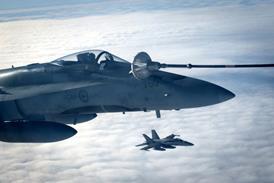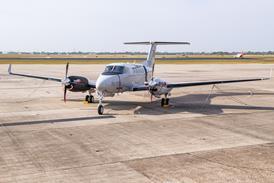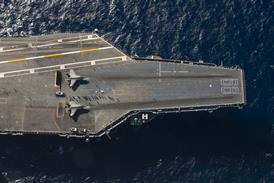By Guy Norris in Los Angeles
|
|
|---|
| The flame-out is believed to be the first to hit a CF6-80-powered A330-200 |
Twinjet lands safely after engines relit ‘within about one minute’ during descent
General Electric is working with Airbus and Chinese aviation officials to find out what caused both CF6-80E1 engines on a Qatar Airways A330-200 to simultaneously flame-out on descent into Shanghai after a flight from Doha.
The 1 June incident, thought to be the first of its type to hit this particular engine/airframe combination, is understood to have occurred as the aircraft was descending through 21,000ft (6,400m). GE confirms the incident happened “between 30,000ft and 20,000ft”.
The weather was inclement and there were thunderstorms in the area, but industry sources say the aircraft was not in cloud when the incident happened.
GE says the engines were relit “within about 1min”. Sources say that when the incident occurred the A330’s anti-icing and continuous ignition were functioning. Both engines relit automatically, one immediately and the other very shortly after, says a source.
GE says it is “working with the local Airbus representatives and the Chinese CAAC to understand exactly what it was”. It adds that neither the engines nor airframe suffered damage during the event, and that the A330 has now returned to service. Sources say the aircraft was detained by Chinese aviation officials for a week while they investigated the incident.
Qatar Airways was unavailable for comment.
GE declines to speculate on the cause, although investigations are thought to be focused on potential ice accumulations due to the weather, related effects on the full- authority digital engine control sensors and the potential for fuel nozzle ice contamination.
| Icing tests seek explanation GE says it has been conducting ground icing tests on CF6-80s at its Peebles test site in Ohio, to test and analyse the behaviour of the engine under simulated bad weather conditions. It says that, since its introduction in 1985, the CF6-80 family has experienced eight dual-engine flame-outs at high altitude – above 17,500ft (5,340m) – in “extreme icing conditions during gradual aircraft descent. The flame-outs were caused by ice accretion and shedding into the engine.” GE stresses that, as in the case of the Qatar incident, “all the CF6 engines automatically restarted, and all of the aircraft operated normally for the remainder of the flights”. It adds that “GE and the regulators [FAA] have concluded that no field action is necessary”. GE says it is in “ongoing communications with regulatory authorities on this issue”. Other GE-related work in this area has been focused on tackling the engine flame-out problem on the CFM International CFM56-3B1. |
|---|
Source: Flight International
























